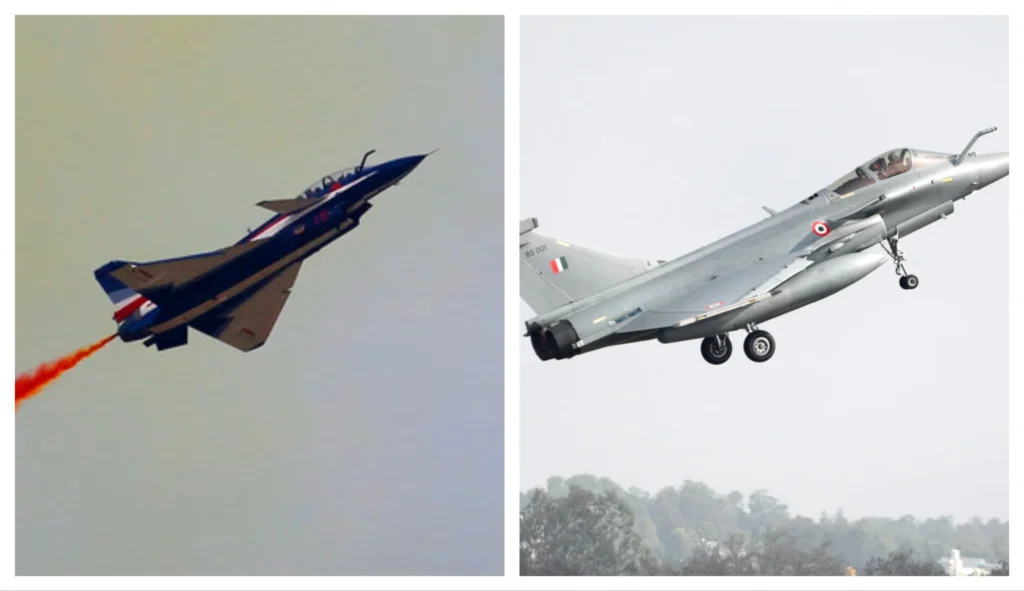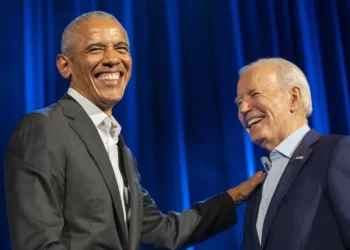A surprise victory by Pakistani Chinese-made jet fighters in an air battle with Western-made Indian aircraft has triggered alarm in the global defense industry.
The opening of hostilities on Wednesday morning between India and Pakistan saw one of the largest air battles in modern history, with Pakistan emerging the victor. U.S. officials told Reuters that Chinese-made Pakistani J-10 aircraft shot down French-made Indian Rafale jets with Chinese PL-15 air-to-air missiles. The incident is the first time a Rafale has been shot down and the first time a J-10 has downed another aircraft.

A French-made Rafale fighter jet takes off on the inaugural day of the Aero India 2021 at Yelahanka air base in Bengaluru, India, Wednesday, Feb. 3, 2021. (AP Photo/Aijaz Rahi)
Though the J-10 was introduced in 2004, China’s lack of direct foreign engagements means it has never seen a combat deployment prior to Wednesday. The fact that its first combat deployment witnessed its triumph over its western equivalent is likely to serve as a major boost to the Chinese defense industry.
The J-10 and Rafale are considered Generation 4.5 fighters, equivalent to the U.S. F-16 and F/A-18.
Islamabad was quick to boast of its victory.
“Not Just Defence — It’s Dominance in the Skies! Pakistan Shatters the Rafale’s Streak of Invincibility with Unmatched Precision and Readiness, Becoming the First Ever Force to Shoot Down Rafale Jet Since Its Combat Debut in 2001. A Historic Blow to the Indian Air Force,” the Government of Pakistan X account said.
The shock of the victory over the Chinese hardware over its western counterpart was quickly reflected in the stock market, with the Eurasian Times reporting that stocks for the J-10C producer, Avic Chengdu Aircraft Co. Ltd., shot up by 36% in two sessions, while the stock of the Rafale producer, Dassault Aviation, fell 1.64-5%.
“Air warfare communities in China, the U.S. and a number of European countries will be extremely interested to try and get as much ground truth as they can on tactics, techniques, procedures, what kit was used, what worked and what didn’t,” Douglas Barrie, senior fellow for military aerospace at the International Institute for Strategic Studies, told Reuters.
Of equal focus to the jets were the missiles they were carrying. Analysts speculate that each side used its most advanced missiles, with the Pakistanis using the Chinese PL-15 air-to-air missile and the Indians using the European Meteor air-to-air missile. The PL-15 appears to have emerged at the top of the engagement, downing at least three fighters, compared to no Pakistani fighters downed.
Pakistan’s Foreign Minister claimed that its fighters only targeted Indian jets that fired first, limiting the number of Indian aircraft downed.
“This is why only five jets were taken down. Had the directive been different, nearly 10-12 jets would have been struck,” he alleged.
The engagement is a wake-up call for the Western defense industry, which has long been unsure about the viability of Chinese weapons.
“You have arguably China’s most capable weapon against the West’s most capable weapon, if indeed it was being carried; we don’t know that,” Barrie said.
A Western industry expert told the outlet that the engagement showed the capabilities of the PL-15 “may be greater than was thought.”
“The PL-15 is a big problem. It is something that the U.S. military pays a lot of attention to,” a defense industry executive added to Reuters.
Debris showcased by Indian officials and shared on social media appears to confirm that at least one of the shoot-downs was done by a PL-15. Another intact PL-15 was recovered and showed off by Indian authorities.
Scant confirmed details remain regarding the Wednesday engagement, but one senior Pakistani security source told CNN that the dogfight was the “largest and longest in recent aviation history,” involving roughly 125 aircraft over an hour period. Opposing aircraft fired missiles at targets sometimes over 100 miles away.
Part of the reason for the long distance was the unwillingness of either aircraft to cross over the border, with a smaller dogfight between the powers in 2019 causing the downing of one Indian Air Force pilot in Pakistan, who was then paraded on TV. The source said that both sides were afraid of a similar humiliation.
The engagement was the first since India and Pakistan upgraded their air fleets; the last flare-up in hostilities in February 2019 featured engagements between older Pakistani F-16s and JF-17s and older Indian Mirage 2000s and MiG-21s. Though Pakistan has also modernized its F-16s since, the aircraft didn’t take part in Wednesday’s engagement.
The victory of the J-10 is likely to boost China’s defense industry across the globe. The Eurasian Times reported that Uzbekistan is currently deciding between purchasing the J-10 and Rafale to modernize its air force. Egypt is allegedly interested in the J-10 as well.
Chinese social media users mocked the Indians over their loss, with one group posting a video to social media showing people dressed up as Indians bemoaning their loss of the aircraft.
VANCE URGES NONINTERVENTION WITH INDIA AND PAKISTAN AS CONFLICT ESCALATES WITH MASS DRONE ATTACKS
Wars between allied countries are often used as a testing ground for opposing defense industries. During the Cold War, the U.S. and Soviet defense industries used Israel and its Arab opponents as testing grounds to view their weapons’ performance before a hypothetical hot conflict.
The same pattern appears to be repeated in India-Pakistan, with the United States and China eager to view how Chinese weapons would perform in a possible war over Taiwan.

















